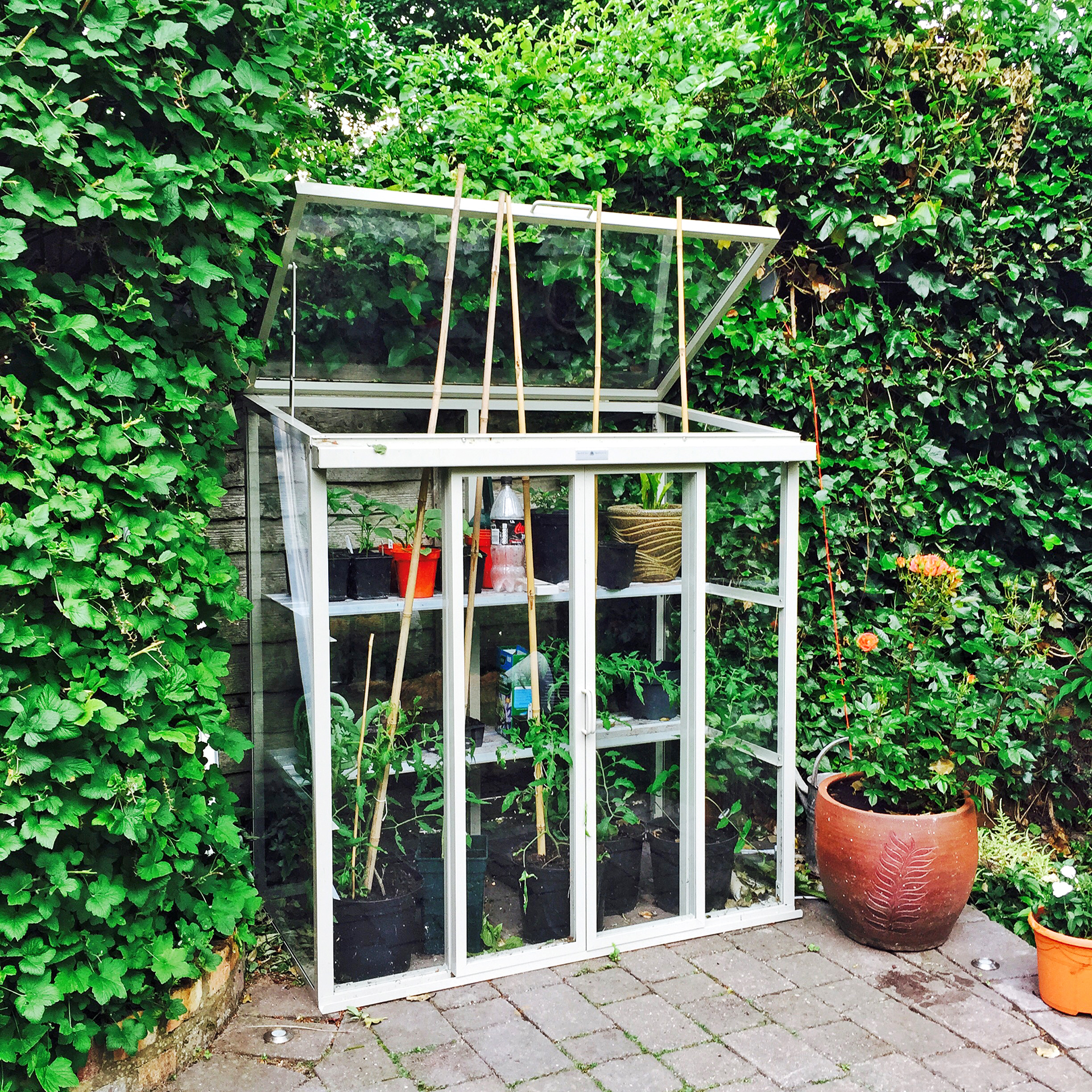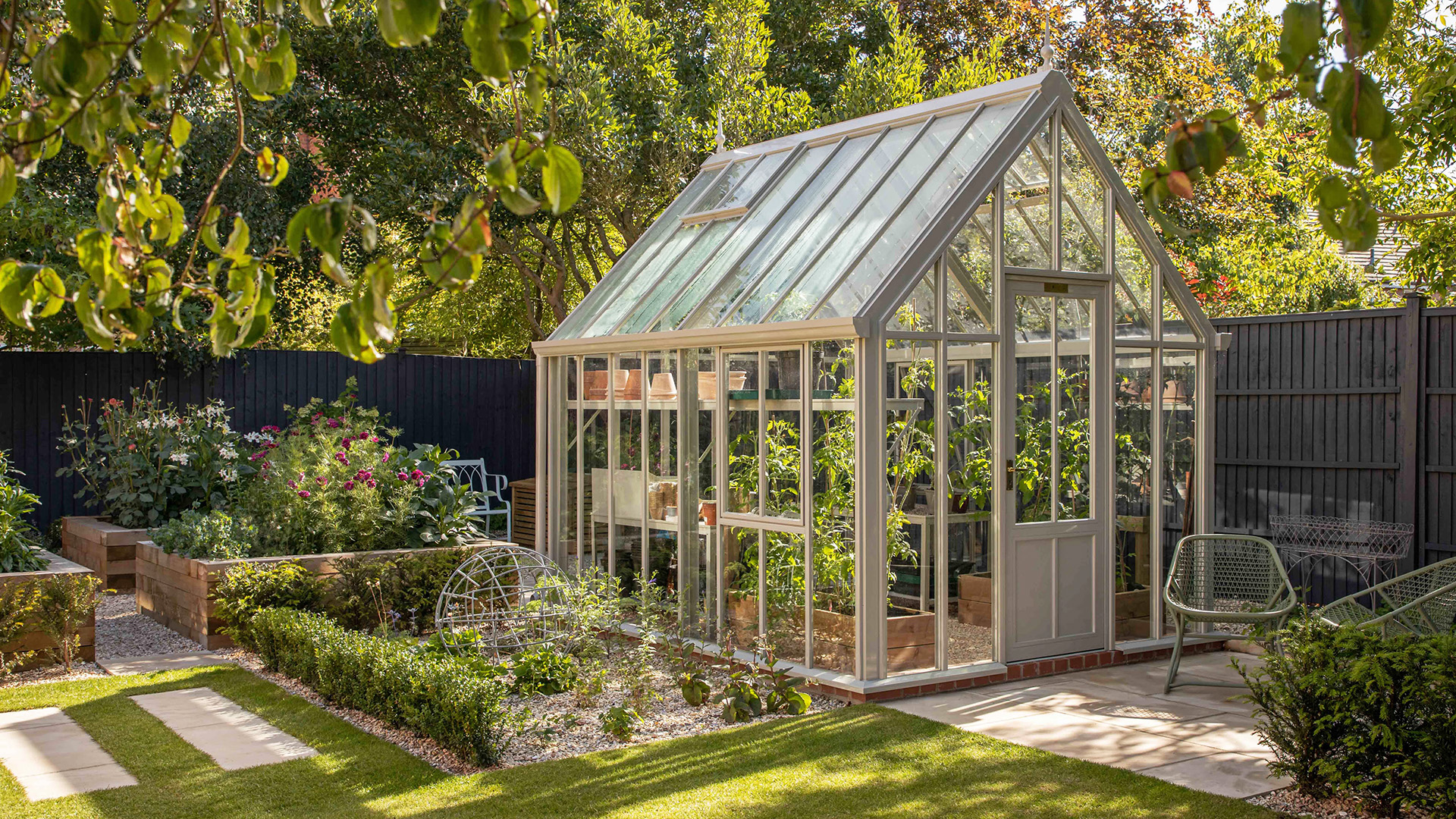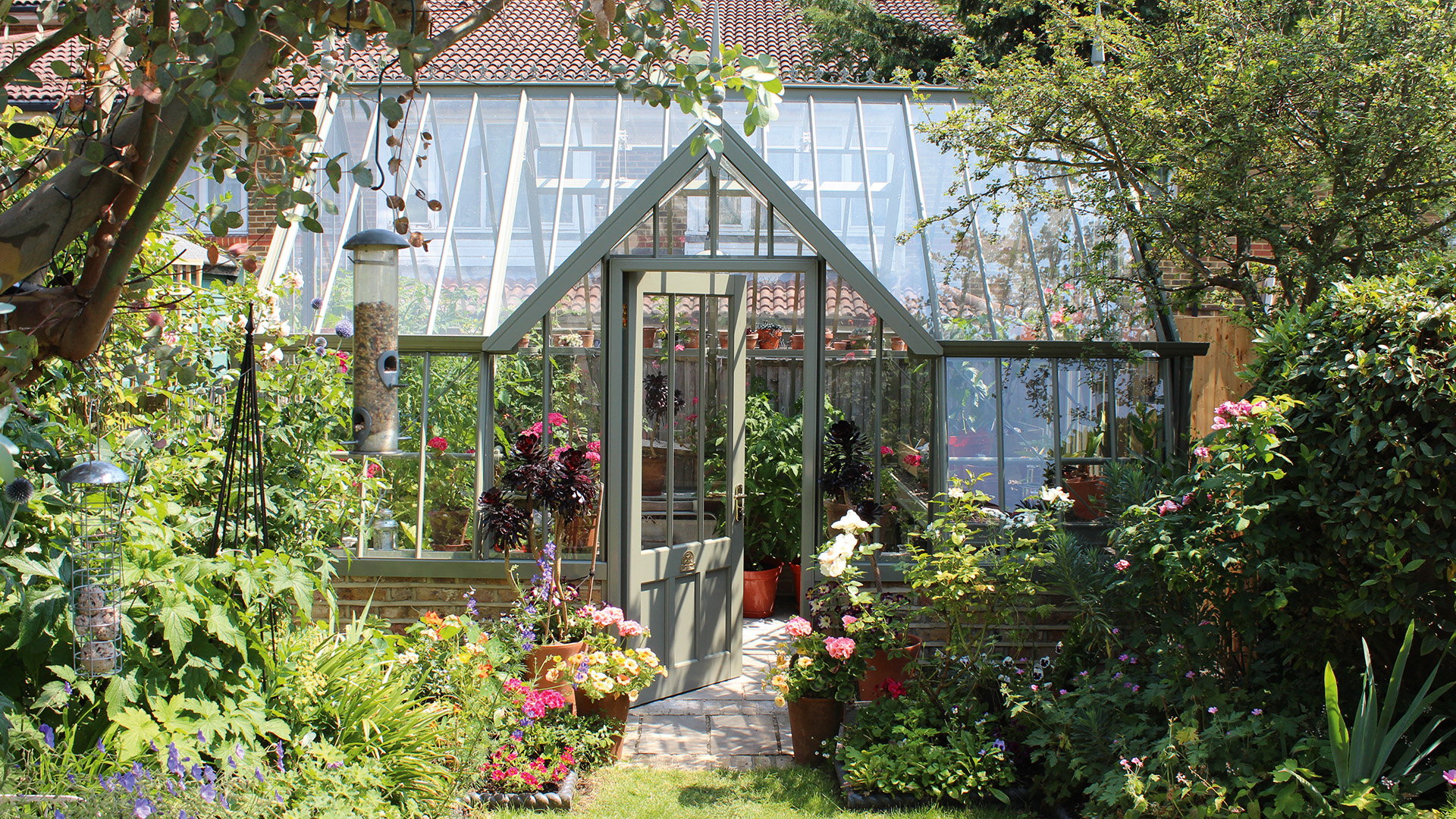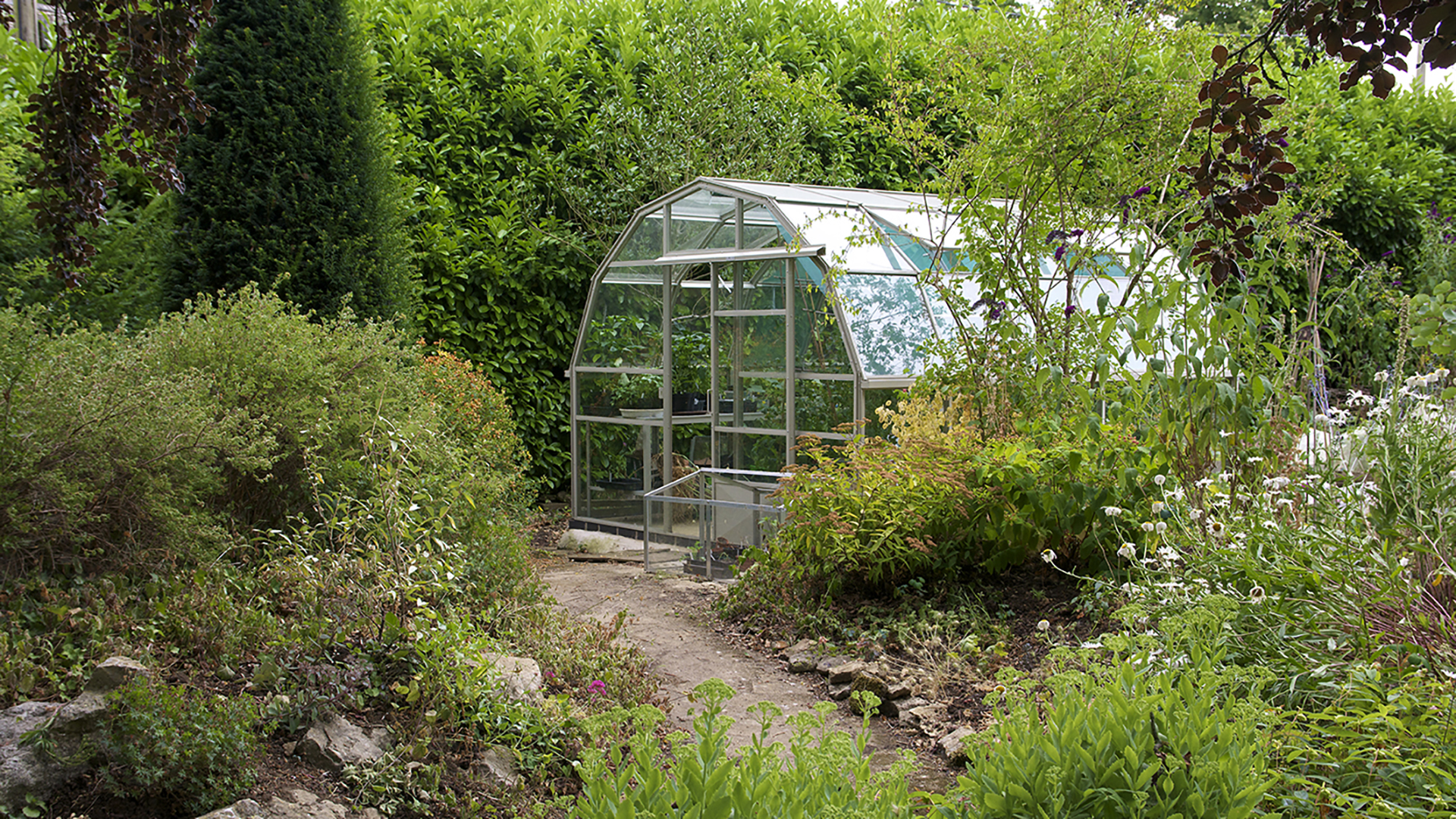How to choose a greenhouse
Want to grow your own vegetables and plants from seed? Learn how to create a protected growing environment with our essential guide to buying a greenhouse

A greenhouse can be one of the most valuable additions to a garden and offers the opportunity to grow a much wider range of plants, often making these available earlier or later in the year.
Despite the array of designs available, the simplest constructions are usually adequate for most garden designs. A greenhouse measuring 2.5 x 5m (8 x 16ft) will provide sufficient space for most needs.
Have a browse through our pick of the best greenhouses, as well as practical advice on positioning and installation.
Get more garden ideas at our dedicated page.

Greenhouses with dwarf walls have a more traditional yet permanent feel. They can also be used for attaching extra storage and offer coverage to keep it looking tidy
Materials for greenhouses
Aluminium is usually the best material for a frame, as it needs little or no upkeep and casts minimal shade due to its slender form. It's also an authentic-looking option for many period homes, mirroring the designs that were popular in the Victorian era.
Wooden greenhouses can be a very attractive choice for homes of any era, blending in with the natural landscape. However, the timber does require periodic upkeep and the bulkier frames will cast more shade inside the greenhouse.
If you're on a very tight budget, then consider a plastic greenhouse. While it won't be a long-lasting addition that enhances the character of your home, a plastic design can still provide a generous growing space.
Get small space home decor ideas, celeb inspiration, DIY tips and more, straight to your inbox!

Need a greenhouse and a shed? The Grow and Store wooden greenhouse and shed from Gabriel Ash serves a dual function. This innovative design costs £6,187 and is ideal for smaller gardens
What type of greenhouse is best?
While the amount of available space will be a big deciding factor in which type of greenhouse you go for, you should also consider how you wish to use the room. 'Perhaps you want your greenhouse to fulfil a dual purpose, to be a very practical tool for growing your own food, but also an alfresco room where you can sit among your plants – for this, a structure that allows for a generous seating area with a view of key staging areas could be a consideration,' says Chris White from Hartley Botanic.

The Victorian lean-to greenhouse from White Cottage Greenhouses is a space-saving design that can be attached to a garden or house wall. This one captures rainwwater from its steeply pitched roof
For more modest gardens, lean-to greenhouses are fantastic for making the most of the space, and can give direct access off the main living area. 'With their roof pitch highest next to the adjoining wall, lean-to greenhouses provide ideal spaces to grow fruit trees and ornamentals which benefit from being trained, such as Pelargonium and Bougainvillea,' adds Chris.
For very small gardens, you could add a small patio greenhouse for nurturing seedlings and smaller plants. This can easily be transported if you move house.

This compact patio glasshouse by Hartley Botanic proves you don't need a lot of space to nurture seedlings
Glazing for a greenhouse
The best glazing material is glass, as it allows the passage of 90 per cent of external light through, and does not degrade in sunlight. It also helps to reflect heat radiated from within the glasshouse back into the structure. 'Choose toughened safety glass as it is five times stronger than regular glass and safer if it breaks,' says Chris White. 'You can also get self-cleaning glass, which keeps the glass bright and clear using rainwater and UV rays.'
Alternatively, polycarbonate sheeting is resistant to breakage, lightweight, durable in adverse weather, and good at retaining heat, yet only transmits 83 per cent of the external light.

The elegant proportions of the Hartley Botanic Victorian greenhouse enhance light flow and plant growth
How to create the perfect growing conditions
To maximise the success of growing your own in a greenhouse, the conditions within it should not fluctuate widely, so invest in a maximum/minimum thermometer to help you to control the temperature inside.
'One of the most common reasons for plant failure in greenhouses is due to insufficient ventilation,' says Chris White. To avoid it overheating, ensure the design you choose has roof vents. Ideally these should be on both sides of the roof ridge and equivalent to 15-20 per cent of the floor area. You can even get thermostatically controlled vents that open as the temperature inside rises.
It is wise to provide some shading, too, such as a white shading paint applied to the inside surface of the glass that reflects some of the light. Shade netting can prove effective, although this allows all of the light through the glass and tends to absorb the heat from it. It can also reduce the quality of the light that does reach the crop.
Also consider how to keep the space warm in autumn and winter. 'A greenhouse allows you to extend the growing season and although artificial heat is not essential, using a thermostatically controlled electric fan heater, gas heaters or even central heating will further widen your growing window,' adds Chris White.

Made from aluminium, Alitex's Mottisfont greenhouse, from £15,950, gives you the flexibility to design the interior layout to suit your planting style
Where to position a greenhouse
Locate your greenhouse where it will get as much sunlight as possible, avoiding shadows from tall trees, fences or walls. Also consider how the structure will best fit in with the garden as a whole.
'For lean-to greenhouses, a south-facing position is ideal; while for standalone structures the ridge along the top of the roof should face from east to west, as this will let the sun run along its longest side during the day,' says Chris White.
'Also site your greenhouse in close proximity to an electricity (if utilising) and water supply, and on fertile soil if you want to install growing beds.'

With a floorplan of just 3x4ft, the Victorian walk around greenhouse is perfect for a small patio, and at just £489.99 from Primrose, offers excellent value for money
Choosing the layout
Carefully plan the layout of growing areas inside to use every available bit of space. Many greenhouse plants will grow well in open soil borders, in ground prepared in a similar way to borders outside. Grow bags are an alternative if the greenhouse has to be placed on a hard standing or paved area.
A shelving system might be better if you want to grow plants in pots, and has the advantage of enabling you to work at a comfortable height. It is particularly useful for raising seedlings and propagating plants.

Hartley Botanic's Highgrow greenhouse has a semi-dodecagon shape to maximise the available space inside, plus large panes of glass and minimal metalwork
Do I need planning permission for a greenhouse?
Planning permission is not usually needed for greenhouses unless the design will be disproportionately large in relation to the house – check Planning Portal for details.
If your home is listed or you live in a designated area such as a conservation area, then you should check with the local authority.

This simple wooden lean-to greenhouse blends in beautifully with the cladding of the house. A plant theatre is displayed on the wall